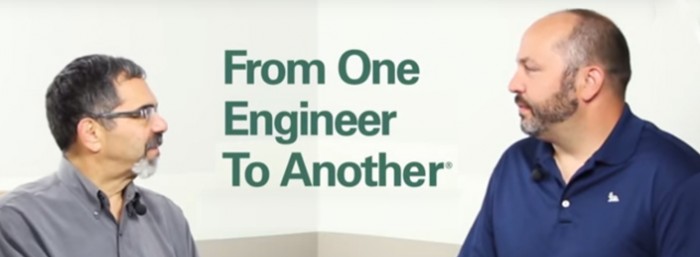Indium Corporation produces metal thermal interface materials, as opposed to what you see in the industry phase-change materials, polymers, etc. Phil Zarrow, SMT industry expert, interviews Seth Homer on the benefits of using these materials.
Phil Zarrow: Seth, let’s discuss Indium Corporation’s thermal interface materials a bit.
Seth Homer: Sure. Indium Corporation produces metal thermal interface materials, as opposed to what you see in the industry phase-change materials, polymers, and that sort of thing. The advantages of our thermal interface offering is that they’re all metal, so thermal conductivity is extremely high.
Phil Zarrow: Why does the indium metal work so well, as a thermal interface?
Seth Homer: That’s an excellent question. I think indium is very unique in the fact that it’s very ductile and soft, and has very good thermal conductivity properties, 86 watts per meter K, to be exact. So you take those advantages and you make a preform out of the indium. This is a traditional indium perform, which is very soft and ductile. Predominantly, that was used before we designed the Heat-Spring® as a thermal interface material. The problem, or the challenge, with using something like that, is that you need 100 psi to get it to deform. So, what we’ve done is invented a pattern, called the Heat-Spring®, which allows you to further reduce the contact resistance so that you can deform this and get good thermal interface contact at 30 to 40 psi.
Phil Zarrow: Seth, where do you see Indium Corporation’s thermal interface materials used most in the electronics assembly industry?
Seth Homer: From an industry standpoint, because everything is getting smaller and is required to do more things, there’s a lot more power and a lot more temperature to dissipate, so the applications are growing. But, to give a general idea, IGBT applications; LED applications, where LED arrays are producing a lot of heat on the backside; TIM 2 and TIM 2 applications, as well.
Phil Zarrow: And, Seth, additional resources at Indium Corporation - where can an engineer go?
Seth Homer: Sure. The best place to start is indium.com. At that directory, you can look for regional support from a regional engineer. You can browse through our application notes, as well as our technical data sheets, or if somebody has a specific question and they need a quick answer, they can email me directly, shomer@indium.com.
Phil Zarrow: Very good. Seth, thank you.
Seth Homer: My pleasure.


